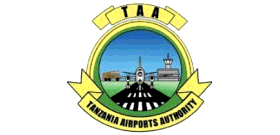 Tanzania Unveils Air–Rail Integration to Boost Connectivity and Cargo Flow
Tanzania Unveils Air–Rail Integration to Boost Connectivity and Cargo Flow
Tanzania is setting a new benchmark for transport integration across Africa, following a landmark agreement between the Tanzania Airports Authority (TAA) and the Tanzania Railways Corporation (TRC). Signed in Dar es Salaam by TAA Director General Abdul Mombokaleo and TRC Director General Engineer Machibya M. Shiwa, the memorandum of understanding commits the nation to an ambitious plan: seamlessly linking airport and rail infrastructure to reshape both passenger and cargo mobility. This partnership is poised to open new horizons for the country’s tourism, logistics, and export sectors—areas with significant growth potential for Sub-Saharan Africa.
Engineer Machibya shared insights into the immediate impact of this collaboration. With the integration of rail and air travel, passengers will soon be able to enter and exit airports via dedicated railway services, reducing reliance on road transport and streamlining journeys. This initiative is rooted in the vision of President H.E. Dr Samia Suluhu Hassan, who has directed the TRC to prioritize infrastructure that physically connects railway stations with key airports. The presidential vision was reinforced at the launch of the Kwala Freight Terminal, a moment that also marked a call for greater efficiency in moving goods across the country and beyond.
Progress on this integration is already visible. A feasibility study at Julius Nyerere International Airport (JNIA)—the nation’s busiest gateway—has been completed, mapping the way for rail connectivity. At Msalato Airport, similar studies are underway. Meanwhile, at Kilimanjaro International Airport (KIA), plans are in place to rehabilitate the existing meter-gauge railway (MGR) infrastructure and construct a modern train station, bringing regional and international travelers closer to the heart of Tanzania’s tourism hotspots, including Mount Kilimanjaro and the northern safari circuit.
What sets this initiative apart is its multifaceted approach to value creation. For the tourism sector—a key driver of Tanzania’s economy—the new infrastructure promises to enhance accessibility and convenience, making the country even more attractive for inbound travelers and tour operators. With smoother connections, Tanzania is set to offer a compelling alternative to road-based transfers, which are often subject to congestion and delays. For those dealing in perishable goods, such as the country’s thriving horticulture and seafood sectors, the integration will facilitate faster and more reliable cargo movement, ensuring products reach international markets with greater speed and freshness. This, in turn, is expected to reduce operating costs for exporters and open new trade lanes for African produce.
Engineer Machibya also emphasized that the overhaul of passenger and freight logistics will not only boost tourism but also drive national development. As Tanzania positions itself as a regional gateway, the benefits will cascade across the entire value chain—from hoteliers and tour operators to freight forwarders and small businesses dependent on efficient logistics. The project is designed to optimize the movement of both people and goods, strengthening Tanzania’s competitiveness on the continent and globally.
TAA Director General Abdul Mombokaleo underscored the strategic significance of the air–rail partnership. “This agreement is a crucial step for national development,” he noted, pointing out that it will simultaneously strengthen the aviation and railway sectors while increasing national revenue. The collaboration is set to transform the experience for both passengers and cargo operators, making seamless intermodal transfers a reality in Tanzania for the first time.
One of the most innovative aspects is the planned introduction of remote check-in and drop-off services outside the airports themselves. This means that travelers and cargo handlers will soon be able to complete check-in formalities and drop off baggage directly at train stations—streamlining transfers to the airport and minimizing the hassle often associated with air travel. For the African market, where infrastructure gaps can limit the efficiency of multimodal transport, Tanzania’s model offers a blueprint for replicable, scalable solutions.
As these projects move from blueprint to reality, the broader impact is expected to be transformative. By offering a direct rail–airport link, Tanzania will not only improve the passenger experience but also further integrate its logistics ecosystem, making it easier for African exports to reach global customers. Enhanced air–rail connectivity can also help drive business travel, opening up new opportunities for regional collaboration and investment.
This initiative should prompt industry professionals across Sub-Saharan Africa to consider the long-term implications for their own operations. The integration of transport modes is more than a convenience—it's a strategic enabler for economic growth, supporting everything from tourism flows to agricultural exports and manufacturing supply chains. With urbanization and demand for seamless mobility on the rise, Tanzania’s approach positions it as a pioneer in smart infrastructure planning.
For those shaping Africa’s travel and transport future, the message is clear: investments in integrated systems will be key to unlocking new efficiencies, reducing costs, and creating value for passengers and businesses alike. As Tanzania charts a new course, now is the time for the region’s industry stakeholders to forge partnerships, invest in technology, and embrace innovation to meet the demands of tomorrow’s connected travelers and global trade networks.
